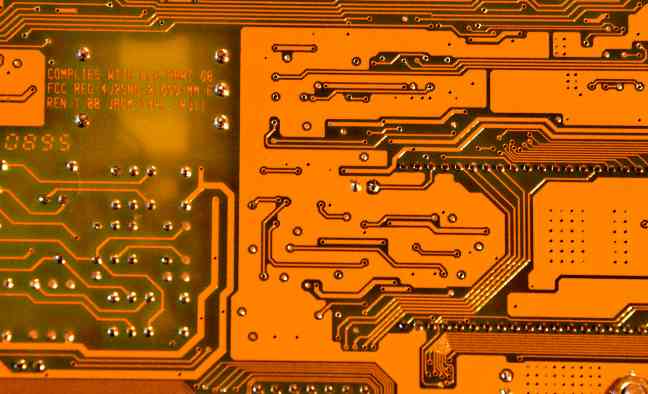
According to the growth rate of the region, there was a strong growth in 2010, South Korea from the end of 2012 to the second quarter of 2013 because of the increase in the demand for smart phones, in the world circuit board market, is the only country to increase, but the end of 2013 because of the decline in demand for smart phones, so the growth rate plummeted. This phenomenon can be seen in the world PCB marketoutlook in Figure 2, and this trend will continue after the first half of 2015.
pcb industry is no exception, by the strong impact of the world economic trend, it can be noted that the 1998 foreign exchange crisis and 2008 financial crisis and other world economic cycle mostly have a 10-year cycle, according to Table 4, the world electronic products market is a 5.2% increase from 2009 to 2015. But the growth of computers and mobile phones will slow after 2015.
This can be seen as related to the economic cycle, due to the inflation in Japan, Europe and other countries, the depreciation of yen and euro prices, the surge of shop loans, will not be as serious as the last foreign exchange crisis or financial crisis, but we can expect the stagnation of the world economy. Instead of over-investing in economies of scale, the focus should be on corporate strategy and soft energy enhancement.

2015 Korean domestic PCB market trends
Last year, the demand for smartphones of Samsung Electronics fell, and the performance of PCB suppliers was depressed. In particular, hdl and fpcb substrate manufacturers invested in manufacturing facilities and expanded production capacity, so it was difficult to ensure the operation rate of factories, and not only sales but also operating profits fell significantly. This situation has been predicted, according to the Ministry of Knowledge Economy data (Figure 3) in 2012, the pcb industry in South Korea mainly focused on mobile phones.
At that time, Samsung and lg's mobile phones had a high market share in the world market, and of course, the demand for mobile phone circuit boards increased, so it was natural for domestic circuit board manufacturers to invest.
However, as expected, the huge market has also been hit by Chinese factories, which are also the production base, and Korean products are losing out to Chinese products in the price-sensitive Southeast Asian market. As a result of this drop in demand, the parts market has shrunk, and it is not easy to expand its share in the mobile phone market in the future. Fortunately, as the leading semiconductor country, South Korea is increasing the demand for semiconductors in the world, and not only use MCP(multichippackage),FC(flipchip),CSP(chipscalepackage) on Chinese smartphones. Moreover, the demand for substrate for PC service memory is also increasing, and the DDR3(doubledatarate3) used in PC memory will be upgraded to DDR4, and the PCB industry will benefit from the growth.
North American PCB sales continued to grow slowly in October
IPC - The International Electronic Industry Connection Association recently released the "October North American PCB industry Survey Statistical Report". The report shows that PCB sales continued to grow slowly in October, with the book-to-bill ratio falling back to 1.02.
In October, the total PCB shipments in North America increased by 1.4% compared with October 2014. Year-to-date shipments are up 0.4%. Compared to the previous month, PCB shipments fell by 6.9%.
PCB orders in October plunged 20.5% year on year; Year-to-date order growth has slowed to 2.1%. Orders in October were down 6.0% compared to the previous month.
Ms. Sharon Starr, Director of market Research at IPC, said: "Impacted by strong order growth in the first half of the year, PCB growth in North America continued to moderate in October. The sharp drop in orders pushed down October's book-to-bill ratio, which had been in positive territory for 13 consecutive months, and given the rebound in orders, sales are expected to be healthy in the fourth quarter of this year."
The October North American PCB Industry Survey Statistics Report will be published next week. The report details the sales volume, order volume, and respective book-to-bill ratios of rigid and flexible PCBS, as well as the growth of the military and medical markets, sample demand, and other important data.
The book-to-bill ratio is calculated by dividing the order volume of the sample companies participating in the IPC survey over the past three months by the sales volume for the same period. A ratio of more than 1.00 indicates that current demand exceeds supply, indicating that sales will move toward growth over the next three to six months. A ratio of less than 1.00 indicates that the current supply is greater than the demand.
The year-on-year growth rate and year-to-date growth rate are of guiding significance for exploring the development trend of the industry. The sequential data should be treated with caution because it is subject to cyclical and short-term fluctuations. Orders are more volatile than shipments, and changes in the book-to-bill ratio from month to month are less important unless there is a clear trend for more than three consecutive months. It is just as important to understand why orders and shipments change as it is to understand changes in the book-to-shipment ratio.
IPC's monthly PCB industry statistics are derived from data regularly provided by a representative sample of rigid and flexible PCB manufacturers in the United States and Canada. IPC will issue monthly PCB book-to-bill ratio and PCB statistics project reports. The monthly statistics report will be released in the last week of the following month.









